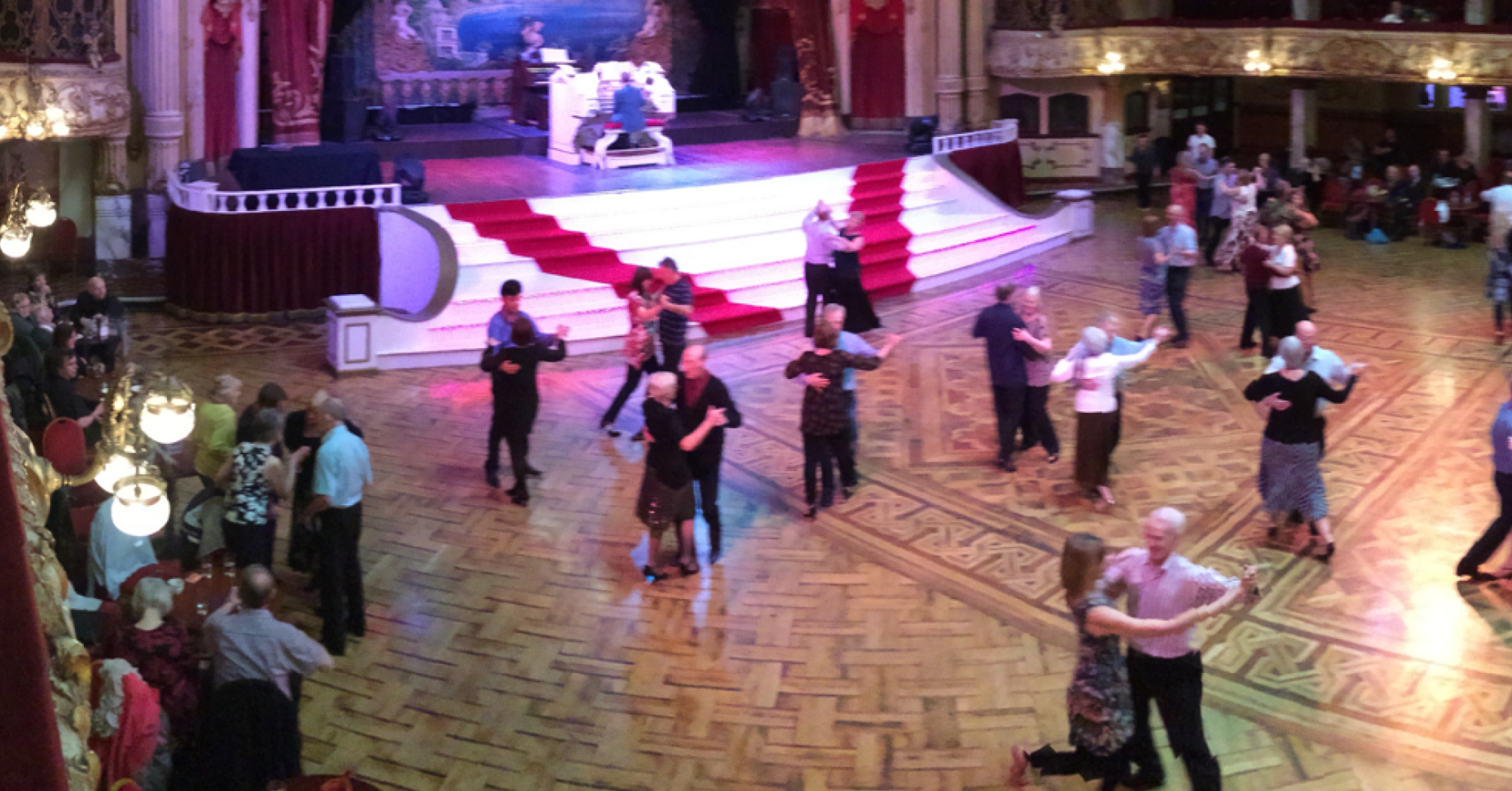We have a decent understanding now of what muscles we frequently use to make strong and controlled ballroom movements. But what dancer training exercises can make them stronger – and give our dancing more power, speed and endurance?
Last week, we looked at the major ballroom dance muscle groups we use to make magic on the floor. Now let’s get specific. These muscles we often forget about, either because we’ve never heard of them, or because, well, they just don’t seem that important. Apologies in advance for some of the longer Latin words below – they may be hard to pronounce, but you’ll sound very impressive while using them.
Like a certain Depeche Mode song, there’s some techniques in dancing you just can’t get enough of. Tricky body movements that can take a lifetime of training to master. Here’s some common dancing exercises worth adding to your routine.
Previously, we talked about how to improve balance using the principle of grounding. Time to get more advanced!
Last week we learned a powerful tool for improving balance, by increasing floor connection and stability. Now it’s time to take the principle of staying grounded to the dance floor and feel it in action.
A lot of instructors talk about the importance of staying ‘grounded’ through your movements. You might hear strange comments like ‘heavy walking’, and ‘push through the floor’. When learning how to improve our balance in dance, what exactly does staying grounded do for us?
Dancing without your arms is like painting a picture with only half your colour palette. Great dancers have learned to express the music with their whole body, to create better musicality and convey the emotion of the dance. So how can we start to develop our ballroom arm styling so it moves as fabulously as the rest of us?
Ever watched a show like ‘So You Think You Can Dance?’ or ‘Dancing With the Stars’, and wondered how they were able to pick up so many dances at once? Yes, they’ve had some prior training in both cases, but still, could you dance lyrical, samba, and Bollywood after a few weeks of practice?
Now that we’ve a general idea of how to get the most from your dance practice, let’s look at three common issues all dancers face and how to resolve them by asking questions and experimenting.
To improve your dancing without an instructor, you must be patient and observant of what feels comfortable, balanced, and smooth… and what does not.
So now that you’ve started to build your dance repertoire, you might notice that you’re actually starting to get ‘danced out’. You watch with envy those guys and gals who seem to be able to shake it non-stop – and they’re still there when you’re packing up your shoes. How can you raise your dance stamina to keep up?
There’s two quick answers: improve your physical fitness, and improve your dance efficiency.
We are talking about dance stamina, which is very different from strength.
The latter requires a very different approach.
1. Practice!
I can hear your groans from here, But it’s true – if you want to build your endurance, practicing your steps at the intensity that tires you regularly will allow you to do it longer and longer – and naturally you’ll get better at the steps as well.
Pic of muscles: ‘Also, this looks nice.’
Make sure you pace yourself. The fastest way to improve is to set an intensity that stops short of pulling muscles or frustrating yourself.
2. Less is more
Most dancers start out doing everything too much: too much hips, too much arm styling, too much turning… You get the idea. All that extra energy just drains your dance stamina, and throws off your partner as well. See if you can relax your body a little more, do a little less, and still move with your partner.
3. Consider a dance fitness class
Many studios teach dance classes that focus on burning calories. For example, Joy of Dance teaches Zumba, Nia, and Ginga classes, which vary in their intensity. You might even try a style like capoera that can’t help but strengthen your body simply because it’s the nature of the dance.
4. Hang From the Joints
Try this: position yourself in a dance frame with an imaginary partner.
Now, relax as much as you can without loosing the frame. You’ll find it a lot easier to hold the position, while spending a minimal amount of energy holding your body at the right angles. Practice dancing like this, alone and with a partner, to keep soft and save your dance stamina.
5. Fill the Music
In ballroom, movements should be spread out to fill each beat. For instance, if you begin a waltz reverse turn by rotating your body, hips and feet leftward on count 1, if will be MUCH easier to complete the turn on steps 2, 3. It’s a smoother lead too, which will score you more dance partners.
Other movements, like open breaks or contra checks, can save dance stamina if the lead is initiated a fraction of a second earlier – it’s all about being comfortable enough with your steps to anticipate the action just before it happens.
I’m not giving followers permission to back-lead here. But be ready for these subtle lead changes, and you will work with your partner – not against him.
